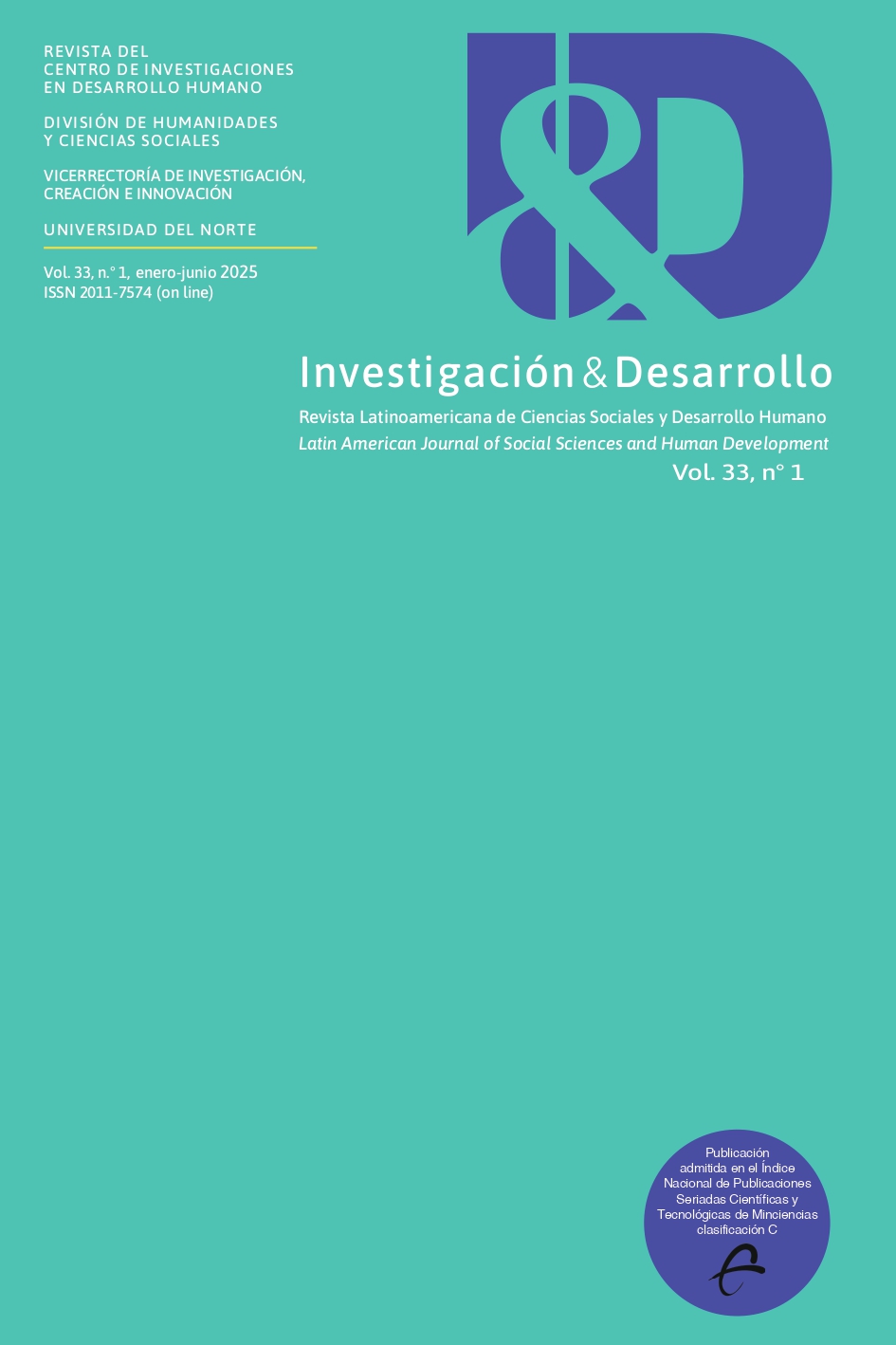Medusa: Imagen de control de mujeres que sufren violencia de género en sitios de Cuiabá (Brasil)
DOI:
https://doi.org/10.14482/indes.33.01.115.965Palabras clave:
violencia contra las mujeres, periodismo en línea, violencia de género, representación, controlar la imagenResumen
El objetivo de este artículo es analizar cómo las mujeres víctimas de violencia de género, ya sea en el ámbito doméstico o público, son representadas por la prensa online en Cuiabá (Brasil), a partir de artículos periodísticos publicados en los sitios web Olhar Direto y FolhaMax. La metodología incluye análisis interseccional (Collins y Bilge, 2021; Carneiro, 2019), investigación exploratoria (Bonin, 2010) y análisis de contenido (Bardin, 2011) articulados con imágenes de control (Collins, 2019; Bueno, 2020), a partir de 40 artículos de cada sitio, publicados en mayo de 2022. Los resultados preliminares apuntan al surgimiento de Medusa como imagen de control, basada en representaciones femeninas en el contexto de violencia de género construidas por artículos periodísticos en los dos sitios investigados. Con elementos que señalan una búsqueda de justificación de la violencia y cuestionamientos sobre el comportamiento de la víctima evidentes en las noticias analizadas (uso de voz pasiva, motivación del delito y uso de supuestos), la investigación encuentra que persisten estigmas y construcciones sociales patriarcales en los artículos analizados. Esto refuerza la culpabilización de las mujeres que sufren violencia de género y el uso de un lenguaje periodístico que encarcela y castiga (objetiva) a las mujeres medusas. En conclusión, entiendo que los reporteros forman parte de una lógica de mercado que valora el número de clics, pero es necesario reflexionar sobre la influencia que artículos como estos tienen en la sociedad. Cuando se culpabiliza a la víctima y/o se relativiza la violencia como un elemento secundario, se incentiva una nueva violencia contra las mujeres, que seguirá sin ser tratada como un problema principal y colectivo.
Citas
Almeida, Fabricio; Fidalgo, Roberta (2021). A cultura de culpabilização da vítima no crime de estupro – “As Medusas Contemporâneas”. Cadernos de Direito, Piracicaba, v. 20(39), 125-140. https://miguilim.ibict.br/handle/miguilim/5844.
Bandeira, Lourdes Maria (2014). Violência de gênero: a construção de um campo teórico e de investigação. Sociedade e Estado, v. 29(2), 449-469. https://doi.org/10.1590/S0102-69922014000200008.
Bardin, Laurence (2011). Análise de conteúdo (1ª ed., Vol.3, pp.11-279). Luís Antero Reto, Augusto Pinheiro. Edições 70.
Beauvoir, Simone de (2016). O segundo sexo (3ª ed., Volume 1: Fatos e mitos, pp. 9-339). Sérgio Milliet. Nova Fronteira.
Bonin, Jiani A (2010). Delineamentos para pensar a metodologia como práxis na pesquisa em comunicação. Rastros, Joinvile (v. 11, 9-21). https://docplayer.com.br/54562387-Delineamentos-para-pensar-a-metodologia-como-praxis-na-pesquisa-em-comunicacao-jiani-adriana-bonin-1.html.
Brasil, GMMP (2023, 30 de julho). National Report. Who Makes the News. https://whomakesthenews.org/wp-content/uploads/2021/07/1-Relatorio-GMMP-Brasil-portugues-12-07-21-completo-1.pdf.
Bueno, Thaísa; Reino, Lucas S (2018). A. Entre a tabloidização e o teaser publicitário: uma análise dos títulos caça-cliques. Revista Observatório, Palmas (v.4, n.3, 675-707). https://sistemas.uft.edu.br/periodicos/index.php/observatorio/article/view/4573.
Bueno, Winnie (2020). Imagens de controle: um conceito do pensamento de Patricia Hill Collins (1ª ed., 11-157). Zouk.
Busca, Resultado da (2022, 11 de abril). Olhar Direto. https://www.olhardireto.com.br/busca/index.asp?busca=viol%EAncia.
Butler, Judith (2014). Regulações de gênero. Cadernos Pagu, Núcleo de Estudos de Gênero Pagu da Universidade Estadual de Campinas (V. 42, 249-274). https://doi.org/10.1590/0104-8333201400420249.
Carneiro, Sueli (2019). Enegrecer o feminismo: A Situação da Mulher Negra na América Latina a partir de uma perspectiva de gênero. Em Pensamento feminista: conceitos fundamentais / Audre Lorde... [et al.]; organização Heloisa Buarque de Holanda (1ª ed., pp.313-321). Bazar do Tempo.
Carneiro, Sueli (2011). Racismo, sexismo e desigualdade no Brasil. Em Consciência e Debate; organização Vera Lúcia Benedito (1ª ed., pp. 192). Selo Negro.
Carneiro, Sueli (2003). Mulheres em movimento. Estudos Avançados (v. 17, n. 49, 117-132). https://doi.org/10.1590/S0103-40142003000300008.
Collins, Patricia Hill (2019). Pensamento feminista negro: o poder da autodefinição.
Em Pensamento feminista: conceitos fundamentais / Audre Lorde... [et al.]; organização Heloisa Buarque de Holanda (1ª ed., pp.271-310). Bazar do Tempo.
Collins, Patricia Hill; Bilge, Sirma (2021). Interseccionalidade (1ª ed., pp 15-279). Rane Souza. Boitempo.
Dictionary, Oxford English (2022, 30 de maio). Clickbait. http://blog.oxforddictionaries.com/2014/08/oxford-dictionaries-update-august-2014/.
Glossário (2024, 10 de outubro). Manual de Comunicação da Secom. Senado Federal. https://www12.senado.leg.br/manualdecomunicacao/glossario?search=chap%C3%A9u.
Hall, Stuart (2016). Cultura e representação (1ª ed, pp.17-259). Daniel Miranda e William Oliveira. Apicuri / PUC-Rio.
Hilgert, Luiza Helena (2020). O arcaico do contemporâneo: Medusa e o mito da mulher. Lampião-Revista de Filosofia (v. 1, n. 1, 41-70). https://www.seer.ufal.br/index.php/lampiao/article/view/11689.
Martino, Luís Mauro Sá (2014). Teoria das Mídias Digitais: linguagens, ambientes, redes (2ª ed., pp 10-296). Vozes.
Minayo, Maria C. de Souza (2005). Laços perigosos entre machismo e violência. Ciência e Saúde Coletiva (v.10(1), 23-26). https://doi.org/10.1590/S1413-81232005000100005.
Moscovici, Serge (2007). Representações sociais: investigações em psicologia social (5ª ed, pp. 7-398). Serge Moscovici: editado em inglês por Gerard Duveen: traduzido do inglês por Pedrinho A. Guareschi. Vozes.
Mulatinho, Carolina Pessoa (2023, 03 de julho). Mães solo têm mais dificuldade de entrar no mercado de trabalho. Agência Brasil. https://agenciabrasil.ebc.com.br/direitos-humanos/noticia/2023-05/maes-solo-tem-mais-dificuldade-de-entrar-no-mercado-de-trabalho#:~:text=O%20n%C3%BAmero%20de%20m%C3%A3es%20solo,11%2C3%20milh%C3%B5es%20em%202022.
Oliveira, Niara de; Rodrigues, Vanessa (2021). Histórias de morte matada contadas feito morte morrida - A narrativa de feminicídios na imprensa brasileira (1ª ed., pp. 21-317). Drops.
Pública, Fórum Brasileiro de Segurança (2023, 10 de agosto). Anuário Brasileiro de Segurança Pública 2023. https://forumseguranca.org.br/anuario-brasileiro-seguranca-publica/.
Quem somos (2022, 18 de abril). Olhar Direto. https://www.olhardireto.com.br/olhar-direto/index.asp?id=3&item=quem-somos.
Saffioti, Heleieth (2001). Contribuições feministas para o estudo da violência de gênero. Cadernos Pagu (v. 16, 115-136). https://doi.org/10.1590/S0104-83332001000100007.
Sampaio, Rafael C.; Lycarião, Diógenes (2021). Análise de conteúdo categorial: manual de aplicação. Coleção Metodologias de Pesquisa (1ª ed., pp. 6-155). Enap. https://repositorio.enap.gov.br/bitstream/1/6542/1/Analise_de_conteudo_categorial_final.pdf.
Scott, Joan (1995). Gênero: Uma Categoria Útil de Análise Histórica. Educação & Realidade (vol. 20, nº 2, 71–99). Tradução de Guacira Lopes Louro da versão em francês. https://seer.ufrgs.br/index.php/educacaoerealidade/article/view/71721.
Sobre nós (2021, 17 de outubro). FolhaMax. https://www.folhamax.com/sobre-nos/.
Descargas
Publicado
Cómo citar
Número
Sección
Licencia
Derechos de autor 2024 Nara Assis dos Santos

Esta obra está bajo una licencia internacional Creative Commons Atribución-NoComercial 4.0.
Investigación & Desarrollo provee acceso libre a su contenido a quienes se registren en la página web bajo el principio de que hacer disponible gratuitamente investigación al público, apoya a un mayor intercambio de conocimiento global.
Se ejecuta bajo Licencia Creative Commons CC BY-NC 4.0.
Ni el envío, ni el procesamiento de los artículos implica costos para los autores o instituciones de las cuales hacen parte.














